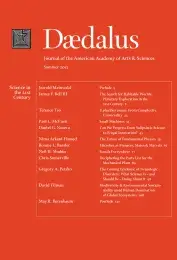Fossils Everywhere
History is omnipresent in the natural world, from inside rocks on the continents to the genes, cells, and organs of each creature on the planet. Linking the historical records of rocks, fossils, and genes has been a boon to understanding the major events in evolution. We use these seemingly different lines of evidence as tools for discovery: analyses of genes can predict likely places to find fossils, and new fossils can provide the means to interpret insights from genetics. Viewed in this way, every living thing on Earth is the extreme tip of a deeply branched tree of life that extends three billion years into the past. Genes and fossils reveal how deeply connected our species is to the rest of the living world and the planet itself.
More than a century of discovery has led us to the realization that the descendants of fish now walk on land, those of dinosaurs fly in the air, and the evolutionary offspring of arboreal primates fly in space and have left footprints on the moon. One hundred years ago these evolutionary transitions would have seemed utterly impossible, or worse, unthinkable. For example, most ½sh reproduce, feed, and breed in water; for their relatives to invade land, almost every system of their bodies would apparently need to change. If the same conceptual challenges hold for every major step in the history of life, how could we ever come to terms with ancient events, let alone understand their relevance to our lives today? We must look to the genes, cells, and organs of every creature alive today to understand the more than 3.5 billion years of the history of life. Each new piece of evidence that emerges helps reveal how the past has shaped us and our world.
We live in an age of invention; new technology changes what we can do, how we live, and what kinds of questions we can ask about our world. The doubling time of computer chip speeds is surpassed by the rate at which we can sequence whole genomes at ever-decreasing cost. The genome of any species can now be identified and compared among creatures as different as yeast and humans.1 Genes can even be swapped between species, moving basic bits of DNA between flies, worms, and mice. The exponential rate of technological change in biology once prompted a colleague of mine to admit that he could have collected all the data for his Ph.D. thesis–written in the early 1990s–in a single week. My colleague made that comment about five years ago; he could now execute the dissertation in an afternoon.
. . .
